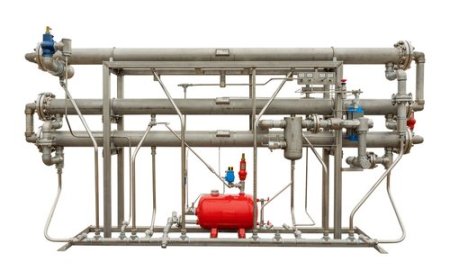Understanding the Millwork Submittal Process with Shop Drawings
The millwork submittal process is an important step in construction projects that involve custom woodwork like cabinets, panels, trim, and furniture.
In the world of architectural and interior design, millwork plays a vital role in bringing spaces to life with precision-crafted wood elements like cabinetry, moldings, panels, and custom furniture. However, before these elements can take physical form, they must first pass through a meticulous submittal process, anchored by detailed shop drawings.
The millwork shop drawings process is more than just paperwork; its a critical communication bridge between the design intent and final execution. It ensures that every component meets the projects specifications, aligns with architectural drawings, and satisfies the expectations of all stakeholders involved, from architects and contractors to fabricators and clients.
Shop drawings serve as the visual and technical documentation that guides this process. They detail dimensions, materials, finishes, construction methods, and installation procedures.
Understanding how this submittal workflow functionsfrom the initial drawing development to approval and revisionscan significantly impact the success of a millwork project.
In this article, well break down the key stages of the millwork submittal process, highlight the role of shop drawings, and explore how accuracy, collaboration, and timing contribute to a seamless construction timeline.
What is the Millwork Submittal Process?
The millwork submittal process is an important step in construction projects that involve custom woodwork like cabinets, panels, trim, and furniture. This process helps make sure that everything is made correctly and matches the design plan. It is a way for millwork contractors to show architects and designers how they will build and install each piece before the actual work begins.
The process starts with shop drawings. These are detailed technical drawings that show the exact size, shape, material, finish, and placement of each millwork item. These drawings are created based on the architects original design. Once the shop drawings are ready, they are sent to the architect or designer for review and approval.
The architect carefully checks the shop drawings to confirm they follow the design intent and meet building codes. If changes are needed, the drawings are sent back with comments. The millwork team then makes the corrections and resubmits them. This back-and-forth may happen several times until everyone agrees.
Once the drawings are approved, the millwork items can be built in the workshop. After that, they are delivered and installed at the site according to the approved plans.
In short, the millwork submittal process ensures good communication between designers, contractors, and fabricators. It helps avoid mistakes, saves time, and keeps the project on track. With clear and accurate shop drawings, everyone knows what to expectmaking the finished space look exactly as planned.
Role of Shop Drawings in the Submittal Process
Shop drawings play a very important role in the millwork submittal process. They are detailed drawings made by the millwork team to show how each piece of custom woodwork will be built and installed. These drawings are not just simple sketchesthey include exact sizes, materials, finishes, joints, hardware, and even how each part fits with other parts of the building.
The shop drawings are based on the architects or designers plans. But while the architect's drawings show the overall design, shop drawings focus on the details needed to build each item correctly. For example, if a cabinet is part of the project, the shop drawing will show how wide and tall it is, what type of wood will be used, how the doors open, and how it will be attached to the wall.
Once the shop drawings are complete, they are sent to the architect or designer for approval. This gives the architect a chance to review them and make sure the work matches the design and meets safety standards. If any mistakes or things need to be changed, the drawings are sent back with notes. The millwork team then updates the drawings and resubmits them.
In short, shop drawings help everyone understand the work before it begins. They reduce errors, avoid misunderstandings, and keep the project running smoothly. Without shop drawings, it would be hard to turn design ideas into real, well-built millwork pieces.
Step-by-Step Breakdown of the Millwork Submittal Process
The millwork submittal process helps ensure that all custom woodworklike cabinets, shelves, or decorative panelsis built correctly and matches the design. Heres a simple step-by-step breakdown of how it works:
1. Review of Architectural Drawings:
The millwork team starts by reviewing the architects or designers drawings to understand the design, materials, and measurements needed.
2. Creation of Shop Drawings:
Next, the team creates shop drawings. These are detailed plans that show how each item will be made and installed. They include measurements, materials, finishes, and hardware details.
3. Internal Review:
Before sending the shop drawings to the architect, the millwork company reviews them carefully to make sure everything is accurate.
4. Submittal to Architect or Designer:
The shop drawings are then submitted to the architect or designer for review and approval.
5. Review and Comments:
The architect checks the drawings to ensure they match the original design. If changes are needed, they add comments and send the drawings back.
6. Revisions (if needed):
The millwork team updates the drawings based on the architects feedback and resubmits them.
7. Final Approval:
Once the architect is happy with the drawings, they approve them. This means the millwork can now be built.
8. Fabrication and Installation:
With approved drawings, the millwork is made in the workshop and then delivered to the site for installation.
This process helps avoid mistakes and ensures the final product matches the design perfectly.
Common Challenges in the Millwork Submittal Process
While the millwork submittal process is important for quality and accuracy, it can come with some common challenges. If not handled properly, these issues can cause delays, extra costs, and confusion on-site.
1. Incomplete or Incorrect Shop Drawings:
One of the biggest problems is submitting shop drawings that are missing important details or have errors. If dimensions, materials, or finishes are wrong or unclear, the architect will have to send them back for corrections, which takes more time.
2. Miscommunication Between Teams:
Good communication is key during the submittal process. Sometimes, designers, contractors, and millwork drafters may not fully understand each others expectations. This can lead to mistakes or repeated changes.
3. Delays in Review and Approval:
The review and approval process can be slow, especially if the architect is busy or if there are too many corrections needed. This can hold up fabrication and delay the overall project.
4. Changes in Design After Submittal:
Sometimes the architect or client decides to change the design after shop drawings have already been submitted. These last-minute changes can cause confusion and require major redraws.
5. Lack of Coordination with Other Trades:
Millwork often has to fit with electrical, plumbing, or HVAC systems. If the shop drawings dont consider these, problems can happen during installation.
To avoid these issues, its important to prepare complete and clear shop drawings, maintain open communication, and plan. This helps keep the millwork process smooth and on time.
Our Thoughts
Understanding the millwork submittal process with shop drawings is essential for ensuring a successful construction or renovation project. From the initial review of architectural plans to the final fabrication and installation, each step in the process plays a key role in transforming design ideas into high-quality, custom woodwork.
Shop drawings are at the heart of this process; they provide the clear, detailed instructions needed to build every element with accuracy and consistency.
While the process can face challenges like miscommunication, delays, or incomplete drawings, these issues can be avoided with careful planning, collaboration, and attention to detail. By following a clear submittal workflow and focusing on accuracy from the start, all teams involved, designers, drafters, contractors, and clients, can work together smoothly.
In the end, a well-managed millwork submittal process helps avoid costly mistakes, saves time, and ensures that the final installation matches the original vision. Its not just a technical step; its the foundation for delivering beautiful, functional, and lasting millwork solutions.
















































